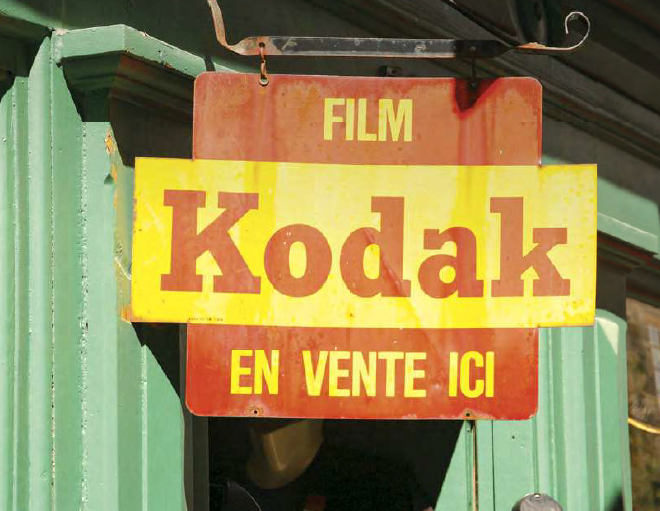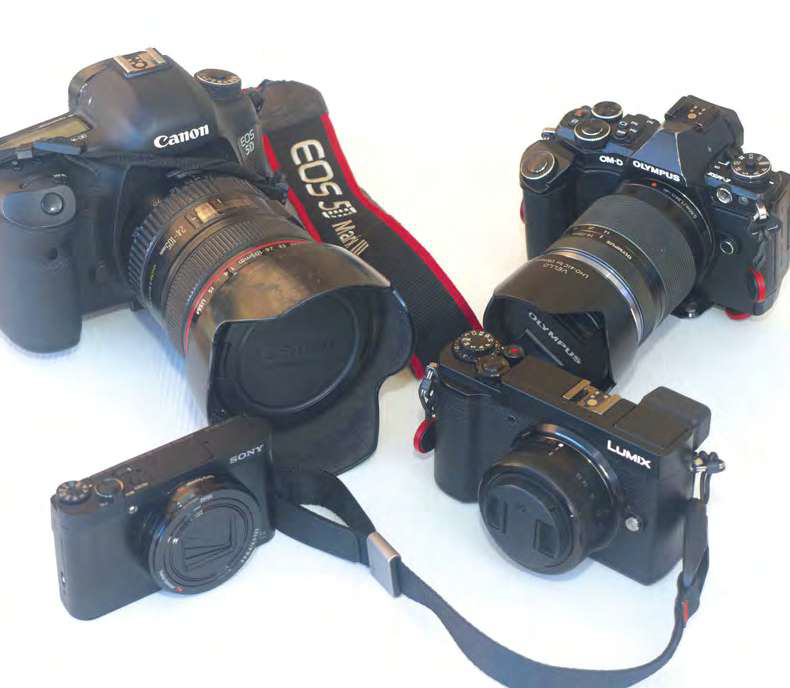
Photography has come a long way from its early days
Here’s a trivia question for those into
such things. Who wrote a song back in 1973 that caught the attention of photographers who used slide/ transparency film? What got me thinking about this very unimportant matter was when I was out and about in the New South Wales Hunter Valley not so long ago indulging in some photography, and a fellow enthusiast happened to walk by. We stopped for a chat, mostly because we were the only ones with cameras — everyone else was waving their mobile phones around!
Anyway, Paul Simon of Simon and Garfunkel fame was the songwriter and the song was entitled ‘Kodachrome.’ The chorus went something like this:
“Kodachrome
They give us those nice bright colours
They give us the greens of summers
Makes you think all the world’s a sunny day, Oh yeah
I got a Nikon camera
I love to take a photograph
So mama don’t take my Kodachrome away.”
I realise there are many readers who can probably remember a time when slide shows — that is, using 35mm film in cardboard or plastic squares, not digital projection — were very much part of family life, particularly for families with a photography enthusiast. For transparency users, Kodachrome was the film of choice, it being either ASA/ ISO 64 or ASA/ISO 25, the latter being memorable for high resolution shots but not so good in low light conditions.
With the huge growth in digital photography over the last 20 years, Kodachrome and just about all transparency and print film — both colour and black and white — has mostly disappeared, with real enthusiasts still doing their own developing and printing. While I did enjoy the latter as a hobby, there’s no doubt about the commercial realities and convenience of digital photos, particularly for the RV traveller.

The amount of cameras available is astonishing
REAL CAMERAS
Sometimes I wonder if digital cameras might be going the same way as photographic film. As noted earlier there are any number of people using their smartphones for digital photography but I reckon a camera does have some advantages over a mobile phone, both creatively and practically.
It’s a slightly ironic fact that while camera use has declined, there are more available styles and types of cameras than ever before — caused in part by digital technology but also by not having some of the design restrictions imposed by 35mm film.
For the keen enthusiast and professional alike, Digital Single Lens Reflex (DSLR) cameras are very much the workhorse. Although quite rugged cameras, particularly towards the professional end, the downside is the weight of the camera — meaning quite a few people simply leave them at home.
The camera industry came up with a solution to this problem in the form of the Four Thirds System which was created by Olympus and, oddly enough, Eastman Kodak.
Four Thirds is a reference to the image sensor, which is smaller than that of a full size DSLR, and normally referred to as a mirrorless camera. In short it means a smaller and lighter camera that still has most features of a DSLR. I can personally testify to that. I have a Canon 5D DSLR which I use mostly for work reasons, and an Olympus OMD 5 Four Thirds camera which I use when travelling by air, particularly overseas — when I used to do that sort of thing — or in an RV, where storage is a premium. Additionally, I have a Panasonic Lumix GX9 camera which is smaller than the OMD but still has interchangeable lenses, and finally, a smaller Sony compact camera with a zoom lens that will fit in my pocket. So, you can see that even in my limited range of cameras, there’s a considerable variety of camera sizes and capabilities.
Tripods and external flash guns add another dimension to the versatility of cameras. On top of all that, just about all cameras these days have video capability.

Back up your photos to enjoy them for years to come
BACKUPS MATTER
Another concern I have — and I know I am not alone in this — is that the increasing use of mobile phones and tablets has made many folk lax in how they store their images. Some I know backup their photos to ‘cloud’ servers like Flickr/Google Photos/ iCloud or even Dropbox but for many, once the phone is upgraded or lost, so too are the photos.
Cameras are different as most use either Compact Flash or SD mass storage cards. Once the card is full, the photos on the card have to be downloaded to a PC or laptop. Waiting until the card is full is not a recommended technique — depending on how many photos you take, it’s far better to do a daily or weekly backup. Rather than use a PC or laptop, it’s better to save images to an external hard drive for backup reasons. External drives, just like computers, do fail occasionally. Desktop external drives are quite large and not really suitable for RV travellers, but they are also quite cheap. For instance, around $100 will get you a 4TB drive which is more than adequate for most people. Portable hard drives are slightly more expensive but are better suited to travellers of all descriptions. Several of those will fit easily into any computer bag and simply plug into the computer when required.
Of course, storing your precious photos is one thing — displaying them in albums and in picture frames is another subject entirely.
Those of us who travel around in our RVs and caravans see plenty of things, some of them at our campsite and others on our travels, and we’d like to keep them in the memory books. Perhaps it’s time to get your camera out of the cupboard and start shooting!
Category: Features
Written: Sun 01 Aug 2021
Printed: August, 2021
Published By: